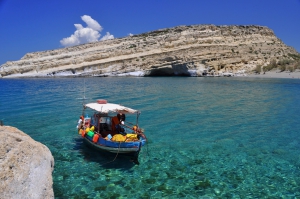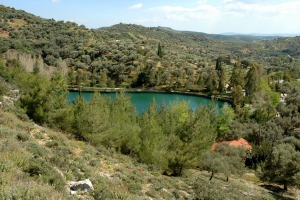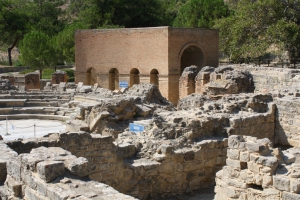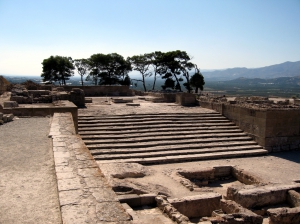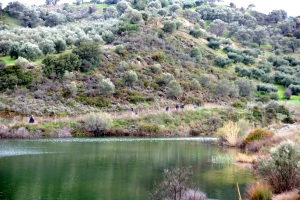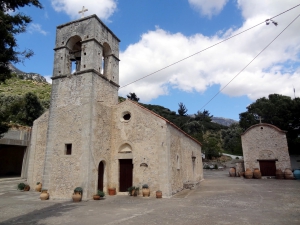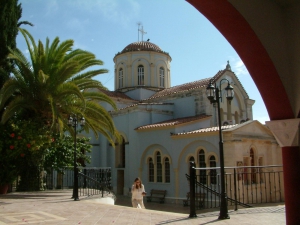Matala is famous for the carved caves in the rocks and the hippies of the ‘70s. It is located close to Phaestus, the second-largest palace of the Minoan civilization. Matala was the port of Phaestus, and in the Roman Times, it became a port of Gortys.
The artificial lake of Zaros or Votomos is located on the southern slopes of Psiloritis, just 1km north of Zaros and 45km southwest of Iraklion. The area was a small wetland before 1987, which was shaped in the crater of Votomos Spring. It took its current form in 1987 when the Forest Service created an artificial lake where the spring water is stored.
The archaeological site of Gortys (or Gortyna) is located 45km south of Heraklion, near the village of Agii Deka and next to the road connecting Agii Deka with Mires. The town covered a large area along the river Mitropolianos (or Litheos) with vast olive groves.
Phaestus (Phestos or Festos) was a Minoan city on Crete, the ruins of which are located 55km south of Heraklion. The city was already inhabited since 6000BC and prospered concurrently with the city of Knossos, till the 1st century BC.
The dam of Faneromeni is located 7km west of the village of Zaros and about 7km north of Tympaki. It is located in a scenic location, in a verdant valley at the southern foot of Psiloritis Mount. The artificial lake covers an area of approximately 1000 acres and has a capacity of 20 million cubic meters.
Vrontissi monastery is located 49km southwest of Heraklion, near Vorizia Gorge, between the villages of Zaros and Vorizia. The area has panoramic views of Vorizia village and the plain of Messara. The monastery is dedicated to Saint Anthony and is one of the oldest monasteries in Crete.
The Monastery of Panagia Kalyviani is located at an altitude of 80m around 60km south of Heraklion, next to Mires and Kalyvia villages. It is a relatively new monastery which was built on the ruins of an older one.
Apolychnos Gorge is located a few kilometers north of Mires town, in a lush green area with dense olive groves. It's actually a narrow valley running along a river, which in some places gets deeper and the vegetation is very dense.
- 1
- 2


















